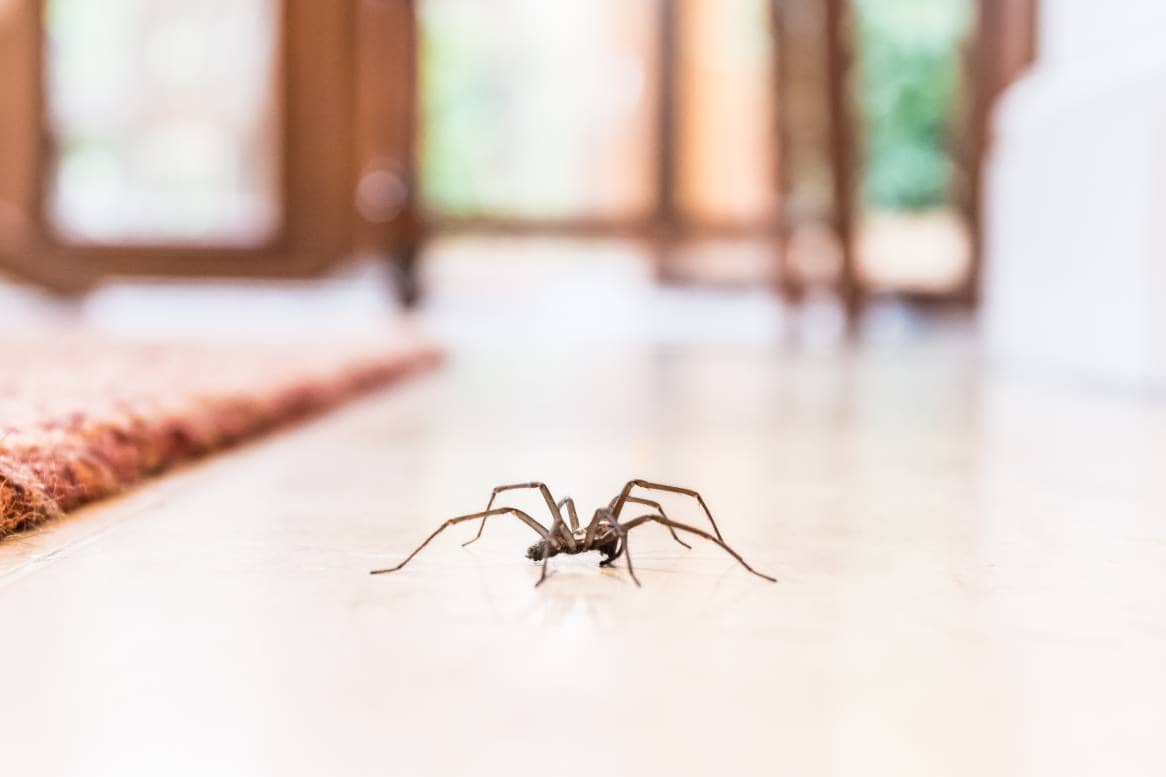Whether you are an arachnid lover or are terrified of these little eight-legged beasts, you might be wondering about spiders in Maine. To the joy of spider lovers, there are hundreds of spider types within the state, and you don’t have to look too far to find any.
For example, you can find some on a boat or chilling at your house. Luckily, you don’t have to worry about being harmed by any of these spiders since Maine is not home to any poisonous varieties.
To learn more about some of the most common spiders found in Maine, read on.

No Poisonous Spiders Found in Maine
Whenever people start looking up spiders in their home, one of the first questions they ask is if any poisonous spiders can be found. Shockingly enough, Maine is not home to any poisonous spiders. Although some spiders may have a bit of venom, they typically pose no real threat to humans. In fact, not a single Maine spider is linked to human fatality.
That being said, there have been a few poisonous spiders, such as the Brown Recluse and Black Widow, transported into Maine from southern states. These spiders are typically caught so that they don’t reproduce in Maine. In other words, you don’t have to worry about finding these spiders in the state.
The 11 Spiders Found in Maine
Because no Maine spiders are poisonous, all of the spiders you can find fall under the non- or less-venomous category. Remember, spiders that are typically called “non-venomous” have some venom, but the venom is not harmful to humans.
1. Common House Spider

| Species: | Parasteatoda tepidariorum |
| Longevity: | 1 year |
| Adult size: | 0.13 – 0.30 in |
| Habitat: | Interior and exterior of buildings, such as homes or sheds |
The common House spider is primarily found in the United States, but it can also be found in parts of Pakistan and Myanmar. These creatures are named so because they are almost exclusively found near human beings. For example, you can find their long and messy webs in or outside your home, office, or shed.
Luckily, House spiders don’t pose any real threat to humans. If provoked, they may bite, but their bites are not fatal or dangerous. Plus, they don’t try to snack on humans either. Instead, their diet comes from other insects, such as flies, ants, or butterflies. So, you should welcome House Spiders into your home since they keep it free of other pests.
House spiders are typically dull brown, but the males will have yellow legs and the females will have orange legs. Overall, these spiders look very camouflage, which causes their abdomen to be filled with different patterns and shades of brown.
2. Furrow Orb Weaver

| Species: | Larinioides cornutus |
| Longevity: | 1 year |
| Adult size: | 0.19 – 0.55 in |
| Habitat: | Moist areas outside, but sometimes near buildings |
The Furrow spider belongs to the Orb-Weaver family, which can be found all over the globe, not just North America. They come in many colors, ranging from black to white to red. They all have a very bulbous abdomen and a pattern that almost looks like an arrow.
These creatures prefer to build their webs in moist areas and shrubs. For this reason, you most often find them near bodies of water. However, you can sometimes find them in damp bridges, barns, or buildings.
Like most other spiders, the Furrow spider eats a variety of other insects, such as gnats, mosquitoes, and flies. Their most common predators include black and yellow mud daubers and birds.
3. Cross Orb Weaver
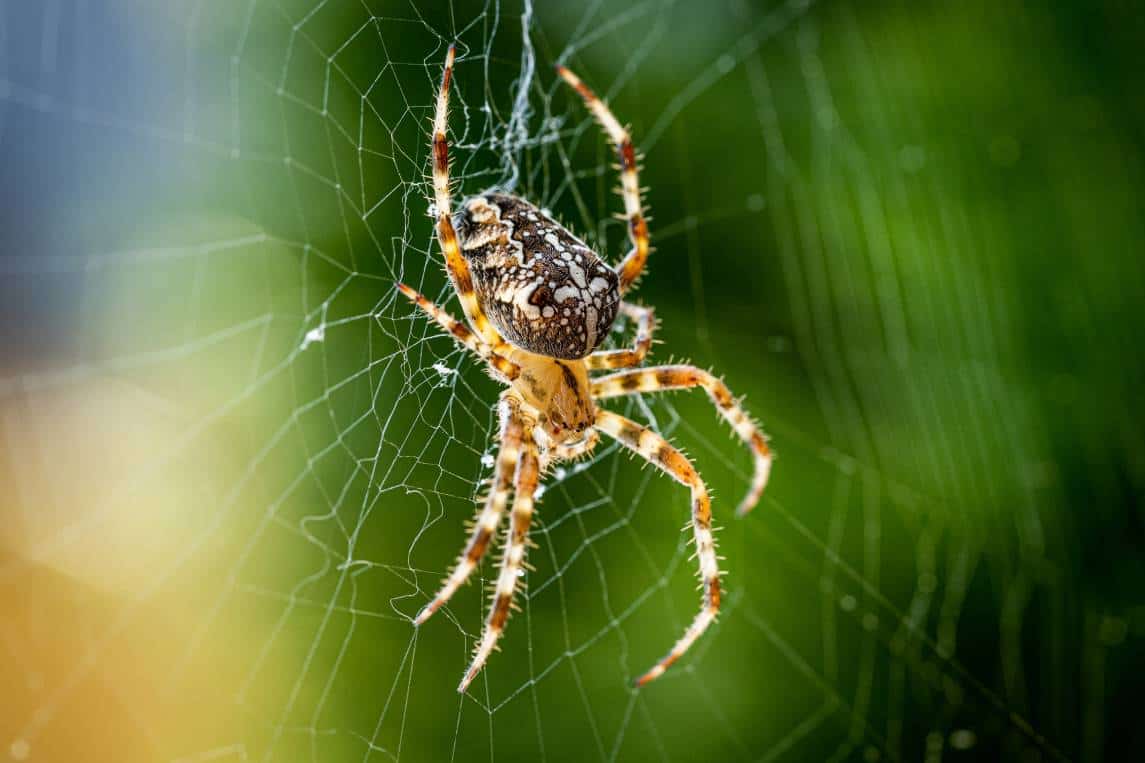
| Species: | Araneus diadematus |
| Longevity: | 1 year |
| Adult size: | 0.22 – 0.79 in |
| Habitat: | Variety of areas, such as meadows, near buildings, or forests |
Another Maine spider to belong to the Orb Weaver family is the Cross spider. This spider can be found in many colors, such as dark gray or light yellow. They always have white mottled markings on their dorsal abdomen and cross marks among their segments.
The spiders are found all throughout North America, but they can be found in parts of Europe as well. Cross Orb Weavers can be found in many areas, such as meadows, buildings, or gardens. They prefer areas with easy access to flying insects.
As you would suspect, these spiders primarily eat flying insects like flies or mosquitoes. Conversely, Cross spiders can be eaten by birds and reptiles, but birds are their most common enemy.
4. Barn Orb Weaver

| Species: | Araneus cavaticus |
| Longevity: | 1 year |
| Adult size: | 0.23 – 0.62 in |
| Habitat: | Wooden structures like barns or boats |
As you probably suspect from their name, you are most likely to find a Barn Orb Weaver inside a barn or on other structures made from wood. They can occasionally be found on boats. They are almost exclusively found in North East United States and Canada.
Barn Orb Weavers have a pretty striking appearance. They are yellow or brown, but they have gray or darker colored stripes on their legs too. The lower part of the spider’s body is black and white.
Much like other Orb Weavers, these spiders primarily eat winged insects, such as flies, mosquitoes, and gnats, but they will also eat ants and other insects if given the chance.
5. Marbled Orb Weaver
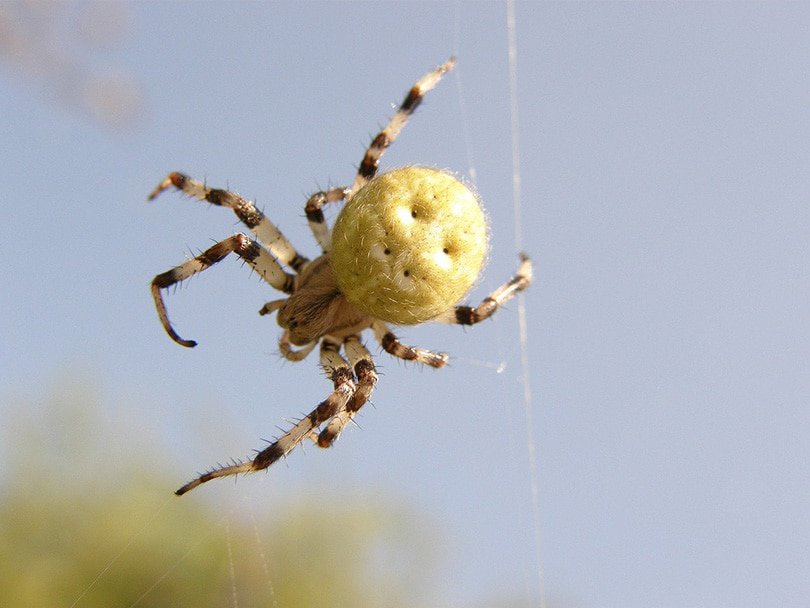
| Species: | Araneus marmoreus |
| Longevity: | 1 year |
| Adult size: | 0.19 – 0.8 in |
| Habitat: | Woodlands or by bodies of water |
Marbled Orb Weavers can be a bit scary to look at. They are typically orange or yellow with the same colored legs or light brown legs. On their abdomen, they have striking yellow, white, gray, or black marble patterns.
These spiders weave some pretty interesting webs. They are most commonly oriented vertically. They use their web to trap many small insects. Most likely, you will find their webs near bodies of waters or in very natural woodlands.
Unlike many other spiders, Marbled Orb Weavers do not frequent areas with a lot of human commotion. So, you will have to go out of your way to find one. Even if you do find one of these spiders, they are not venomous.
6. Shamrock Orb Weaver

| Species: | Araneus trifolium |
| Longevity: | 1 year |
| Adult size: | Up to 0.9 in |
| Habitat: | Wooden structures like barns or boats |
Shamrock Orb Weavers have a beige or brown body. Their abdomen will often be green, brown, yellow, or orange. What makes this spider stand out from other Orb Weavers is their black legs with white dots.
Like other Orb Weavers, the Shamrock Spider is typically only found in very natural environments, free from human life. For example, you can see them in grasslands, shrubs, forest, or gardens.
There, Shamrock Orb Weavers place their web to trap a variety of insects. However, they can also find themselves pray to other bigger creatures, such as birds or lizards.
7. Six-Spotted Fishing (Dock) Spider
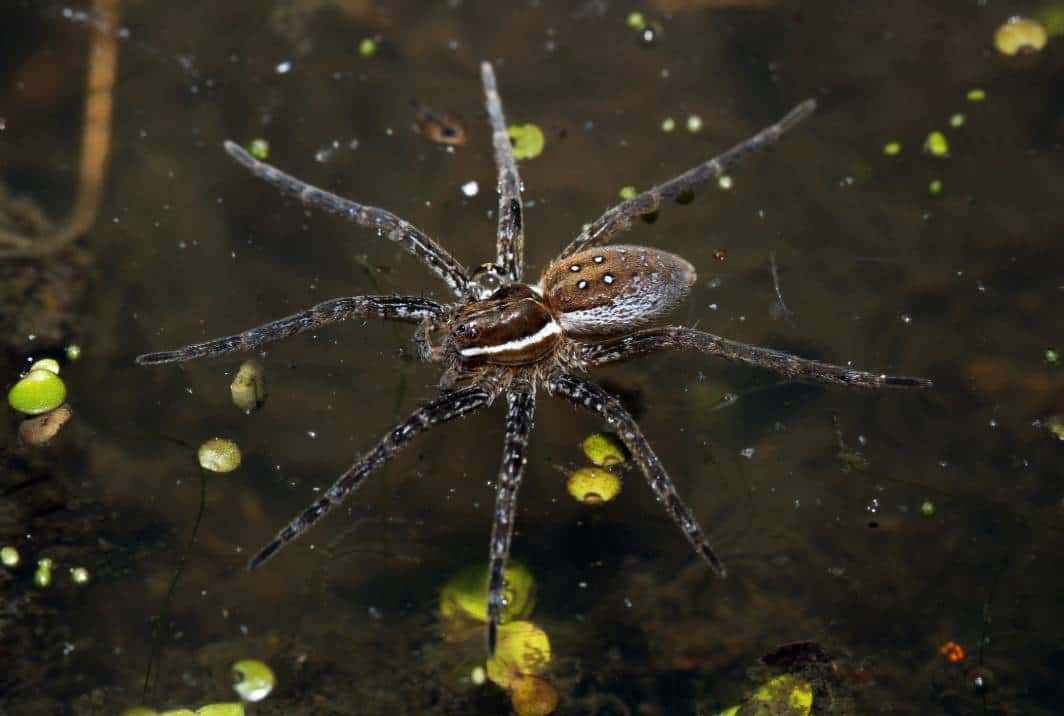
| Species: | Dolomedes tenebrosus |
| Longevity: | 1 year |
| Adult size: | 2.0 – 2.4 in |
| Habitat: | Around bodies of water |
If you frequent bodies of water, you might find a Six-Spotted Fishing Dock spider hiding out. This spider is semi-aquatic, which means they are found frequently by streams, pools, and other bodies of water.
Six-Spotted Fishing Dock spiders are known to have a light brown coloration, but they also have a pale cream stripe on both sides of their cephalothorax. Their abdomen also comes with color spots and dull white lines.
Because Six-Spotted Fishing Dock spiders are semi-aquatic, they primarily eat aquatic insects and even small fish. If they aren’t careful, they can be eaten by birds, snakes, dragon flies, and even wasps.
8. Bold Spider

| Species: | Phidippus audax |
| Longevity: | 1 year |
| Adult size: | 0.23 – 0.59 in |
| Habitat: | Around bodies of water |
With a name like this, it’s no shock that the Bold Spider is quite bold. It classifies as a jumping spider, which means it does not catch prey with a web. Instead, it jumps on its prey while shooting out a silk thread. This thread ensures the prey is captured, even if the spider misses.
Bold spiders are primarily black, but they may have some triangular white patches and other marks on their abdomens. Likewise, their legs have white markings, but their chelicerae can be either metallic blue or green. Their body is very, very hairy too!
You will most likely find Bold Spider in open areas, such as grasslands. This gives them easy access to prey. Their top predators include lizards, dragon flies, and birds.
9. Tan Jumping Spider
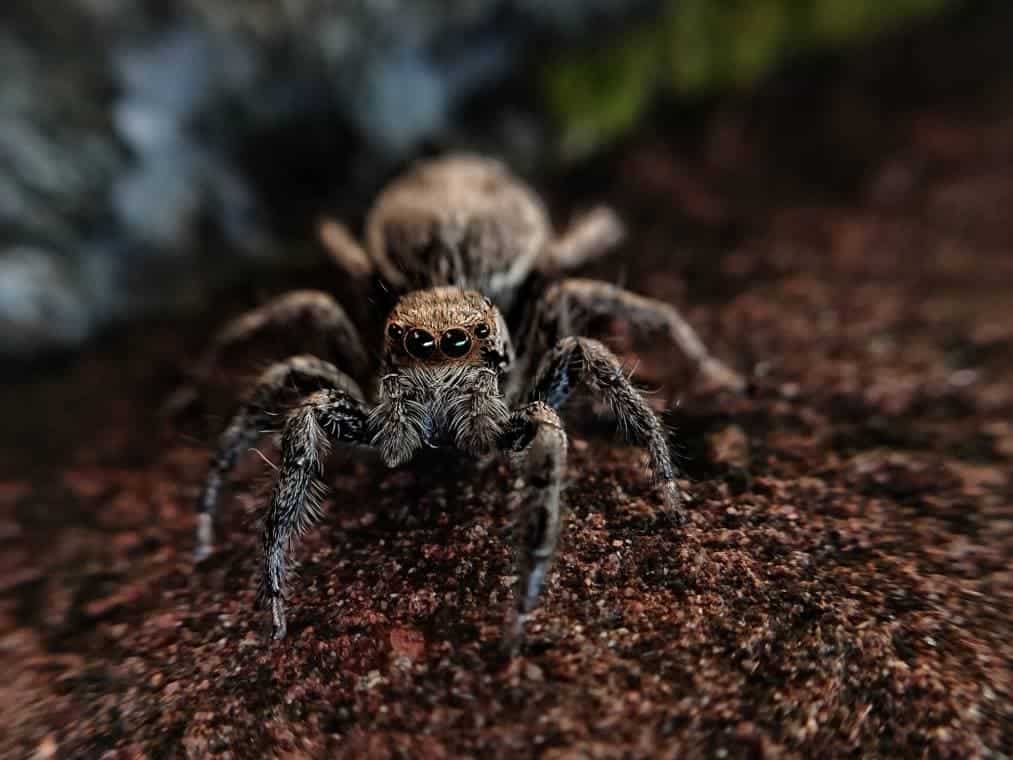
| Species: | Phidippus undatus |
| Longevity: | 1 year |
| Adult size: | 0.33 – 0.51 in |
| Habitat: | Vertical surfaces |
Tan Jumping spiders are brown, gray, or tan, but they also have red, white, or black patches on their body, especially around their eyes. Their abdomen patterns look vertical, which allows you to easily identify these spiders from above.
Most often, you will find Tan Jumping spiders on vertical surfaces. For example, they frequent walls, fences, and trees. They primarily eat smaller varieties of spiders instead of other insects. In contrast, they frequently find themselves eaten by reptiles, wasps, birds, and even some mammals.
10. Wolf Spider
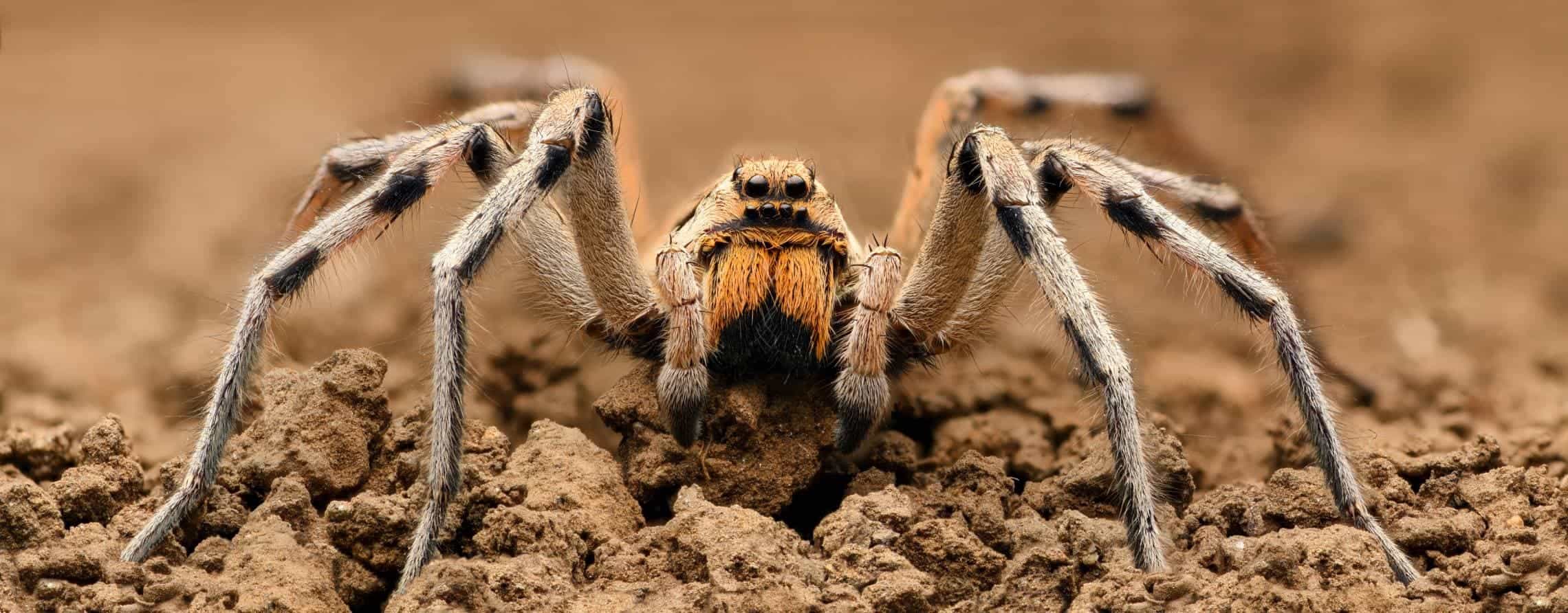
| Species: | Lycosidae |
| Longevity: | 1+ years |
| Adult size: | 0.4 – 1.4 in |
| Habitat: | Vertical surfaces |
Wolf spiders are one of the few spiders in Maine that live longer than one year. These spiders are excellent hunters and do not use a web to catch prey. Instead, they are opportunistic hunters who often chase or pounce on unsuspecting prey.
What’s unique about Wolf spiders is their eyes. Their eyes are arranged in three rows, which allows them to have impeccable eyesight. They also are unique in that they carry their eggs on their legs. Unlike other spiders, Wolf Spiders have a camouflaged appearance, which makes them look dull in comparison to some of the other spiders on this list.
There are actually many types of Wolf Spiders around. The most common in Maine include the Hogna Wolf spider, Tigrossa Wolf spider, and Gladicosa Wolf spider. Of all of the Wolf spiders, the Hogna is the biggest.
11. Goldenrod Crab Spider
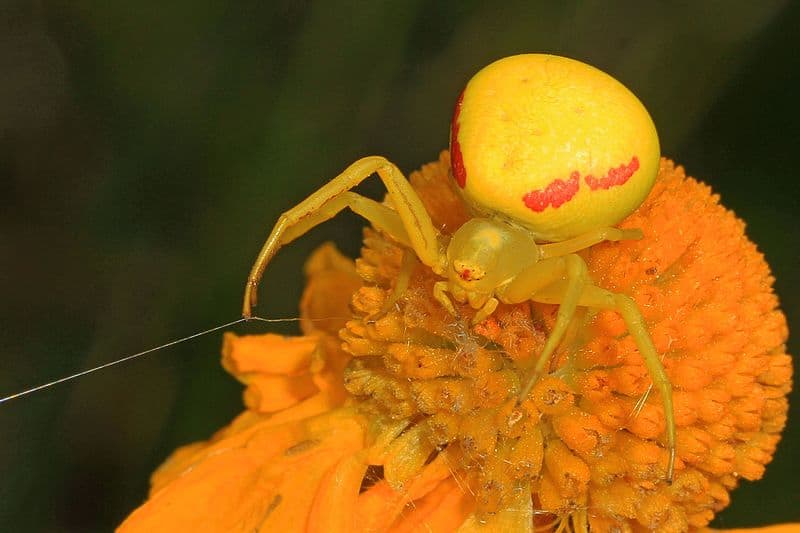
| Species: | Misumena vatia |
| Longevity: | 1 years |
| Adult size: | 0.16 – 0.40 in |
| Habitat: | Vertical surfaces |
The Goldenrod Crab spider is one of the most stunning arachnids. It belongs to a species of arachnids that are color changing flower spiders. They can come in a variety of colors because the diet and environment affect their appearance. In fact, these spiders can change their color over the course of several days.
Goldenrod Crab spiders do not use webs to hunt. Instead, they sit on plants and wait for pollinators to come by. As a result, you often see these spiders sitting on flowers, waiting for unsuspecting prey. As you would expect, they primarily eat bees, wasps, grasshoppers, and butterflies.
You can find these spiders deep in the forest or in a local garden downtown. It doesn’t matter where the flowers are located, as long as they get good access to pollinators.

Conclusion
At the end of the day, you can find hundreds of different spiders in Maine, but not one of them will be poisonous. In this article, we reviewed the 11 most popular or common spiders in the state. Of course, this is far from a comprehensive list of spiders found in Maine, but they include some of the most popular and unique you might want to keep your eye on.
You may want to read this next:
Featured Image Credit by Christine Bird, Shutterstock
